machine learning

2024 Top 10 Innovations
The Scientist Staff | Dec 13, 2024 | 10+ min read
The latest group of winning technologies has a little something for everyone—from scientists at the lab bench to those in the clinic and even the classroom.
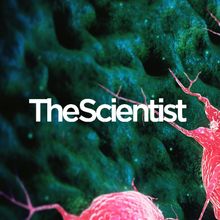
New Approaches for Decoding Cancer at the Single-Cell Level
The Scientist Staff | Dec 2, 2024 | 1 min read
In this webinar, Linghua Wang and Jeremy Goecks will talk about technology that enables new approaches for a better understanding of tumors on a cellular, spatial, and environmental level.
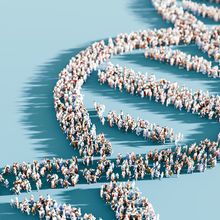
AI-Assisted Genome Studies Are Riddled with Errors
Sahana Sitaraman, PhD | Nov 13, 2024 | 3 min read
Researchers used artificial intelligence in large genomics studies to fill in gaps in patient information and improve predictions, but new research uncovers false positives and misleading correlations.

Harnessing the Power of Artificial Intelligence
The Scientist | Sep 9, 2024 | 1 min read
AI-driven technologies can help scientists accomplish efficient research workflows, from experimental design to data management and beyond.

Evaluating Tumor Heterogeneity with a High Throughput Pipeline
Charlene Lancaster, PhD | Jun 3, 2024 | 3 min read
An automated bioprinting and imaging platform allows researchers to examine heterogeneous responses to anticancer drugs within a tumor organoid population.
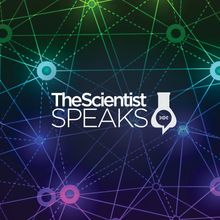
Explainable AI for Rational Antibiotic Discovery
The Scientist | Apr 24, 2024 | 1 min read
Researchers tackle the antibiotic resistance crisis with explainable neural networks and high throughput drug discovery.

Artificial Neural Networks: Learning by Doing
Shelby Bradford, PhD | Mar 1, 2024 | 8 min read
Designed to mimic the brain itself, artificial neural networks use mathematical equations to identify and predict patterns in datasets and images.
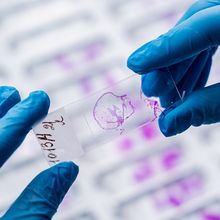
Advanced Spatial Tools Map Hematopoietic Stem Cell Niches
Niki Spahich, PhD | Jan 15, 2024 | 4 min read
New technologies and archival tissue biopsy samples enable exploration of changes in the bone marrow as people age.

Data Strategies for AI-Enabled Scientific Breakthroughs
TetraScience | Dec 11, 2023 | 1 min read
Properly optimizing data enhances AI training for accelerating novel biopharmaceutical discoveries.

Addressing Power and Pitfalls in Machine Learning Neoantigen Prediction
Deanna MacNeil, PhD | Dec 11, 2023 | 4 min read
Researchers honed prediction models and datasets to unlock the potential of deep neural networks in biological applications while avoiding bias.

Why Scientists Need to Rethink Their Data Platforms
TetraScience | Nov 16, 2023 | 1 min read
Good data management is the first step toward improving scientific outcomes with artificial intelligence and machine learning.

A Machine Learning Tool Uncloaks the Hidden Sources of Cancer Cells
Rachael Moeller Gorman | Oct 5, 2023 | 4 min read
Researchers created a model that uses clinical testing data to locate the primary site of cancer cells with no known origin, likely improving survival.
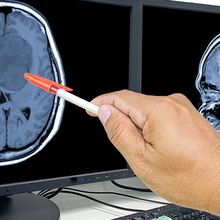
Machine Learning for Predicting Glioblastoma Prognosis
Tanvir Khan, PhD | Oct 4, 2023 | 3 min read
Researchers integrate scRNA-seq, spatial transcriptomics, and histology imaging data to show that spatial cellular architecture predicts glioblastoma prognosis.

Simplifying the Search for Drug Targets
Aparna Nathan, PhD | Aug 1, 2023 | 3 min read
A new machine learning model promises fast prediction of drug-target interactions.

The Laboratory of the Future: How New Technologies Reform Research
Maria Gklotsou, PhD | May 29, 2023 | 4 min read
New advancements in automation, AI, connectivity, sustainability, and more propel research forward.

Real World Data: Opening New Avenues for Health Research
Liliana Garcia Mondragon, PhD | Apr 28, 2023 | 4 min read
Scientists and clinicians increasingly use real world data (RWD) to make valuable discoveries that can be applied to the healthcare industry.

Now AI Can Be Used to Design New Proteins
Kamal Nahas, PhD | Mar 3, 2023 | 4 min read
Machine learning can be harnessed to synthesize artificial light-bearing enzymes that actually work in cells.

Newly Identified Neural Signature of Drug Craving Could Predict Drug Use
Katherine Irving | Jan 11, 2023 | 4 min read
The signature could one day be used to improve treatment planning for people with substance abuse disorders.

Breaking Through Big Data Bottlenecks
Tecan | Dec 1, 2022 | 1 min read
Discover how machine learning helps scientists accelerate their research.
